A Practical Guide to Selling at In-Person Events
Observations from outdoor and indoor vendor booths
Perhaps some of this will be more common knowledge than I realize for folks who are used to the AWP/festival circuit, but after doing several events close together in a variety of settings, I thought it might be worth sharing a few observations (with the bonus of reminding myself what to remember for next time). I had a hard time digging up comprehensive guides like this when I was preparing for the first event, so I thought I might as well make one.
First, there’s the elusively simple question when considering an event: How much can you sell? Who knows? Deciding whether or not to do an event should involve at least some basic math to get an idea of whether you could realistically recoup your expenses (vendor fees, travel costs, meals, supplies—if you’re paying staff, wages). If you’re trying to grow sustainably, “exposure” cannot be enough justification to do an event (at least not all the time—you’ll have to judge when that might the higher priority). At the same time, in my limited experience it can be difficult to gauge an estimate of how much you’ll be able to sell. You have to consider so many things: publicity around the event, expected foot traffic, the audience’s relevance to your products, timing with other competing events in the area, potential competition of other vendors (will you be the only one there selling books, or will you be a needle in a haystack?), how much variety you have available, your ability to promote your presence at the event.
How do you decide what to bring? How much? I’m still trying to work this one out, but I seem to consistently over-pack. I’ll get back to you.
Look at the weather to figure out how to dress, taking the entire event into consideration. Will it rain in the morning? Gradually heat up over the course of the day? (Maybe you’re more thoughtful about these things than I tend to be as someone who wears the same five outfits on a rotating basis, so I’m sorry if this is obvious information to everyone else)
Supplies (may vary by event and/or personal preference):
Inventory (obviously, but if you’re not a morning person like me it helps to be reminded)—more importantly, gotta think about what will/won’t fit in the car! Use that space prudently and with the strength of your back in mind. Everything else you need will take up a lot of cargo room.
If it’s an event you attend on a regular basis, consider changing up your products to keep people coming back.
My experience so far is limited to driving, so I’m not much help with things like AWP or other cross-country events.
Folding chair(s)
Folding table(s)
A 10’ x 10’ space can hold more than you might think, depending on how you configure your displays. I’ve been impressed with indie bookstore booths I’ve seen that basically set up a little miniature bookshop, complete with folding bookcases, library carts, and a U-shaped arrangement of tables.
Table covers
Not a requirement, but can be nice if you want a custom banner/runner for your brand and/or other tablecloth coverings to make it look nicer than a scuffed-up table. Also have the added bonus of helping conceal storage underneath.
Some people get those stretchy ones to keep the tablecloths tied down, which can be particularly useful in outdoor events (think wind—it’s in your life every day but maybe you don’t notice it until your tablecloth is flying all over your books).
Merchandising Displays
So far, we’ve used simple little easels, metal baskets, and wooden crates/trays that I picked up at Dollar Tree and Michael’s. We’ve also placed smaller crates (another Dollar Tree find) upside-down to add more vertical space and highlight books that might be more relevant at a particular event.
If you have flyers you want to display prominently, you might also want some holders to protect them and help them stand out.
Merchandise bags
I haven’t used these a lot yet since many people either bring totes or have already received one at another booth, but it never hurts to be prepared.
Tent canopy + tent weights: you need the weights.
Other weights for table coverings, possibly for product
I haven’t bothered with this yet, but it’s something you start to think about sitting outside in the wind for six-hour stretches.
Folding wagon, dolly, etc.
It can be hard to predict how close the parking will be to where you’re actually setting up.
Easy-to-move crates/boxes (think handles, maybe even stackable and/or nesting)
Towels, tarps, or another covering for your product in case it rains—could also be used to “close shop” overnight if you’re at a multi-day event
Drinks and snacks!
Of course it’s important to hydrate, especially if you’re outside in the heat. BUT if you’re by yourself, you also have to plan for things like bathroom breaks.
Napkins/paper towels (might not be easy to access from your space)
Trash plan! (Use one of your boxes, a plastic bag hung over your chair, something)
I keep forgetting this one and end up filling my pockets with plastic from books, napkins from the food truck, etc.
Hand sanitizer
If you need to eat at your booth, it feels pretty icky to wipe food residue off your hands/mouth and then immediately handle a book someone wants to buy.
Tape, scissors/box cutter: little things that come in handy for quick fixes or tearing down boxes if you sell through inventory (hooray!)
Writing materials/utensils
Someone recommended Post-it notes for author signings so that people could write down their names to make sure they don’t get misspelled
Hotspot (set up phone or get a separate device)
Even if the venue has Wi-Fi, don’t rely on it exclusively.
Power bank
I don’t spend a lot of time away from outlets, so this one was a new habit for me. Either way, make sure you charge up everything the day/night before.
Cords:
All the cords you could possibly need. I’ve discovered that I had cords for the card reader and the hotspot but forgot the one for the iPad/iPhone. Guess which device(s) died?
POS System (card reader/hardware, Venmo QR code, other payment system)
Multiple options are nice. I recently got everything set up at an event only to discover my card reader was suddenly broken, despite working just fine two weeks earlier. I had no plan in place for what else to do at that point, so it was a crash course in setting up other payment methods. Several apps now offer Tap to Pay on iPhone technology for cards, but it’s still good to have other options.
Cash bag, fanny pack, etc.
Price list or other clear signage to indicate what things cost (may also include bundles or other sales/deals)
Business cards and/or print materials about your press/publication
How to set up? If it’s outside, think about the weather: wind, sun, humidity. (And rain, as you’ll see below) Try different things each time to see what works well and what doesn’t. I’m still refining our outdoor setup to encourage more interaction with customers.
Don’t forget to take photos of your setup! Not only can you share them on social media, but you can also keep them for reference as a reminder for what worked (and what didn’t) for future events.
Think about how to pitch different books/products, how to talk about your work and what you do.
It also helps to have some kind of plan in place for reinforcements or to otherwise anticipate needing to leave a sign indicating you’ll be back if you’re on your own. If you’re setting up a tent, you might have to rely upon the kindness of strangers to help. Since all my events so far have been solo, this has been a weird process to sort out. It seems like every time I think I can take a break, someone walks up and buys something, so I’ve become a little paranoid about leaving the booth unattended (even when I go long stretches without a sale). At conferences, this might be simpler (take a break during sessions when most people will be occupied).
During lulls, look around at other booths to see what seems to be working, what doesn’t. If you’re getting constant foot traffic, pat yourself on the back and think about what people are noticing, what’s drawing them to your space. If it’s an event you’re attending regularly, pay attention to who’s showing up and where they tend to linger so you can consider tweaking your products to best meet the needs of your audience.
Oh—and I’d suggest you prepare for all types of weather:
Let’s just say I bought more waterproof tubs + tarps for the next outdoor market (which will also require more sales to recoup new supplies + damaged stock).
The bootstrapped small press life is a constant process of learning and adapting to new challenges, but I’d rather be doing this than just about anything else (most days).
What did I forget? Add your observations and experiments in the comments!

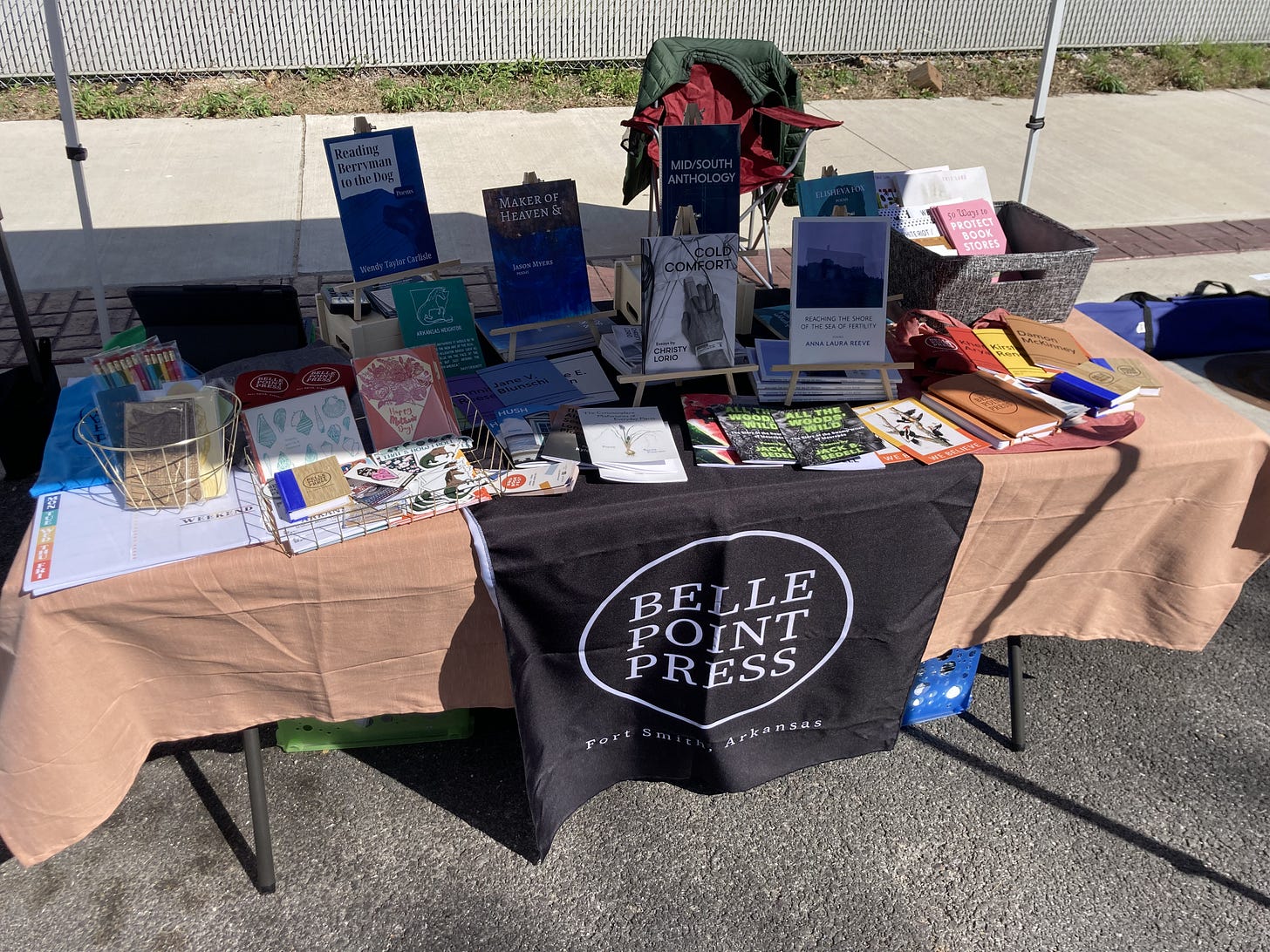
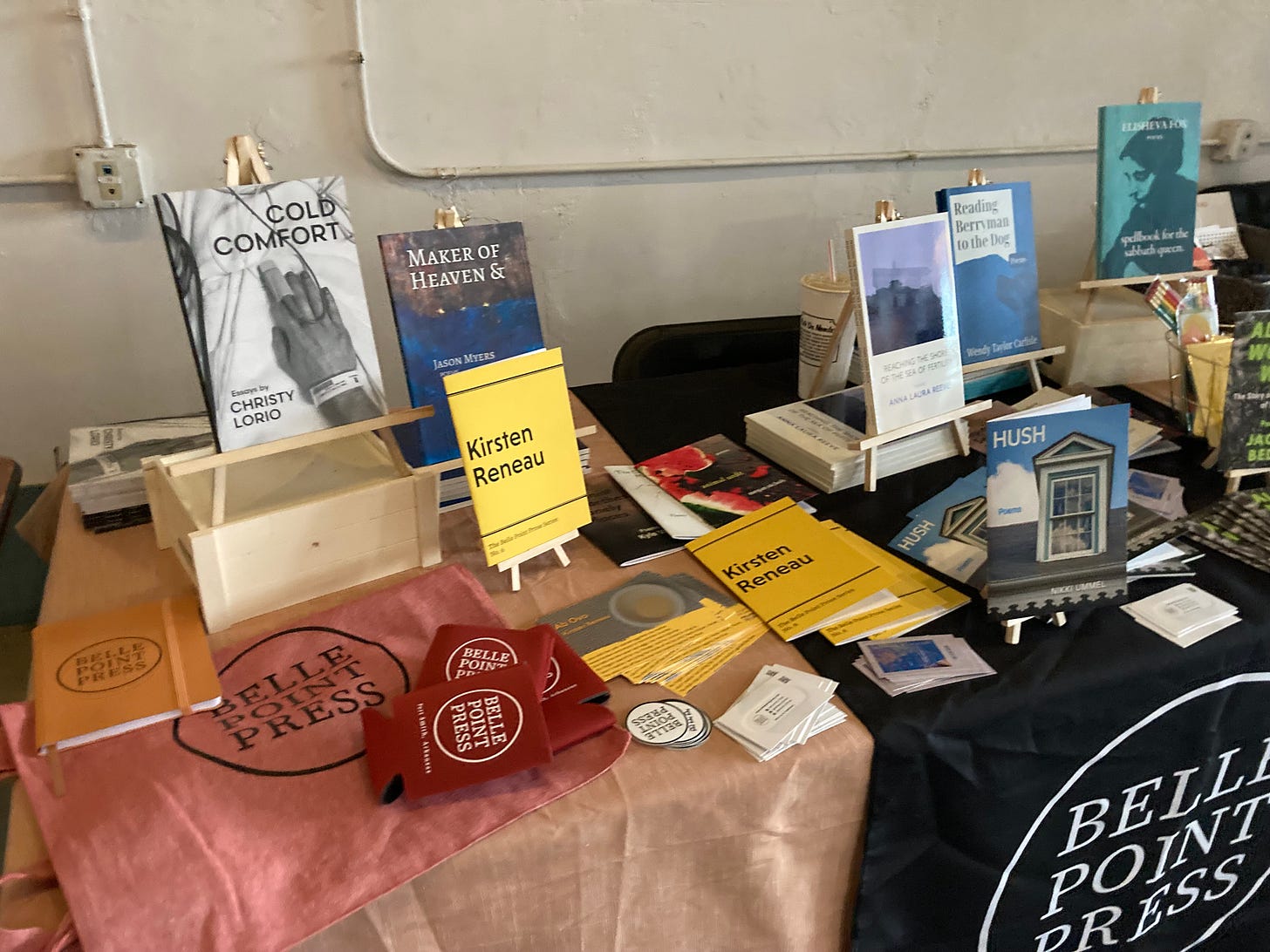
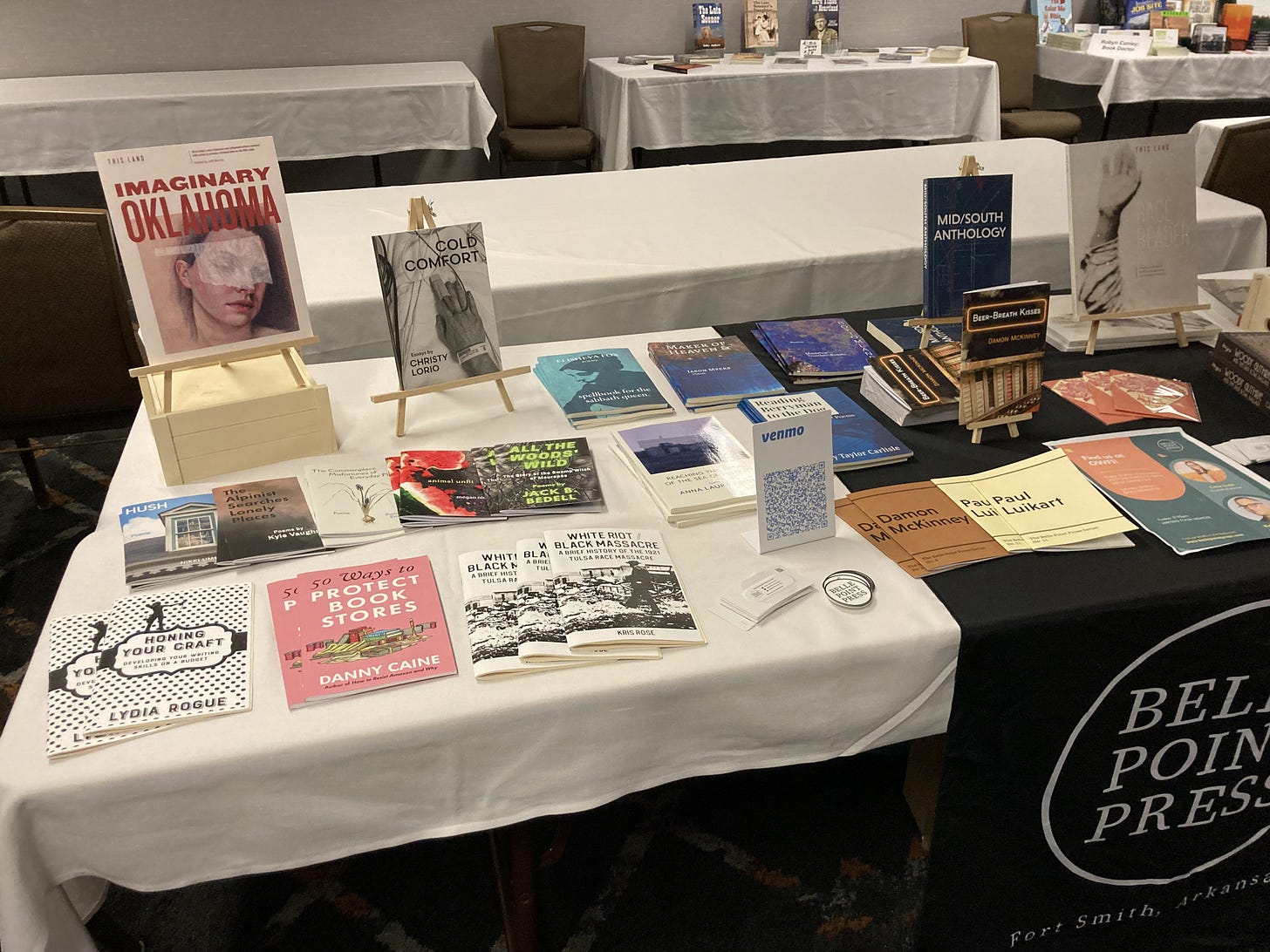
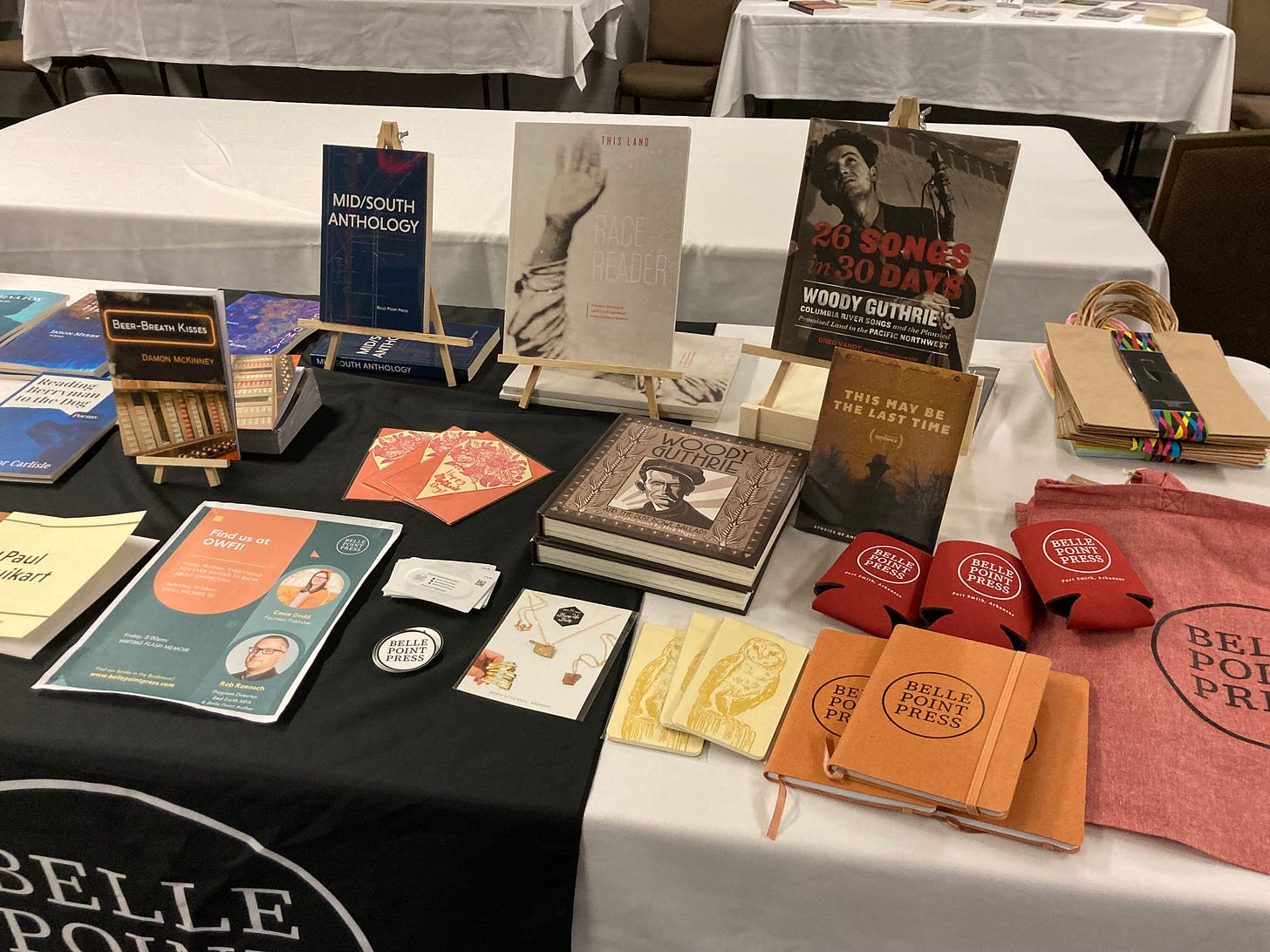
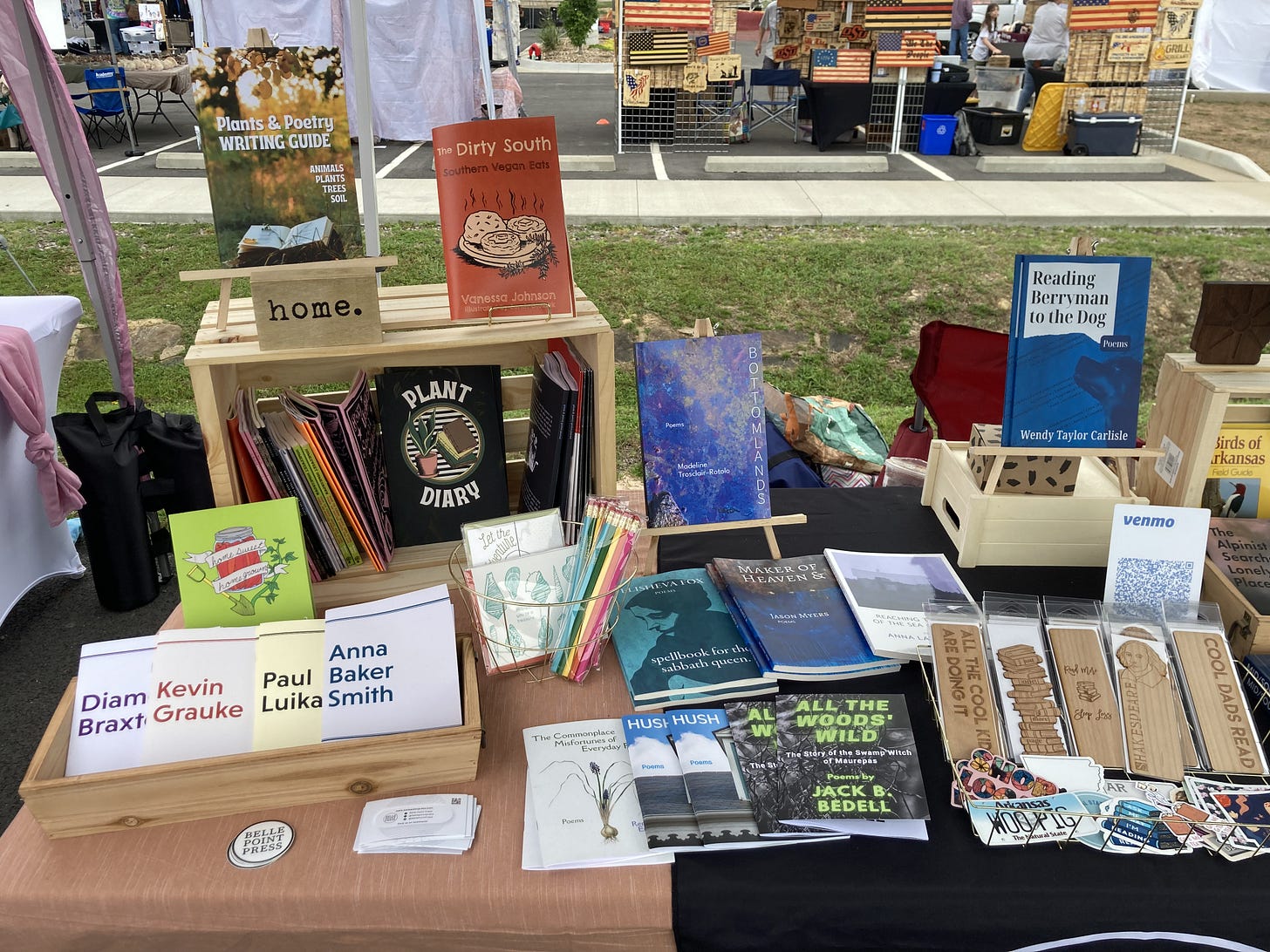
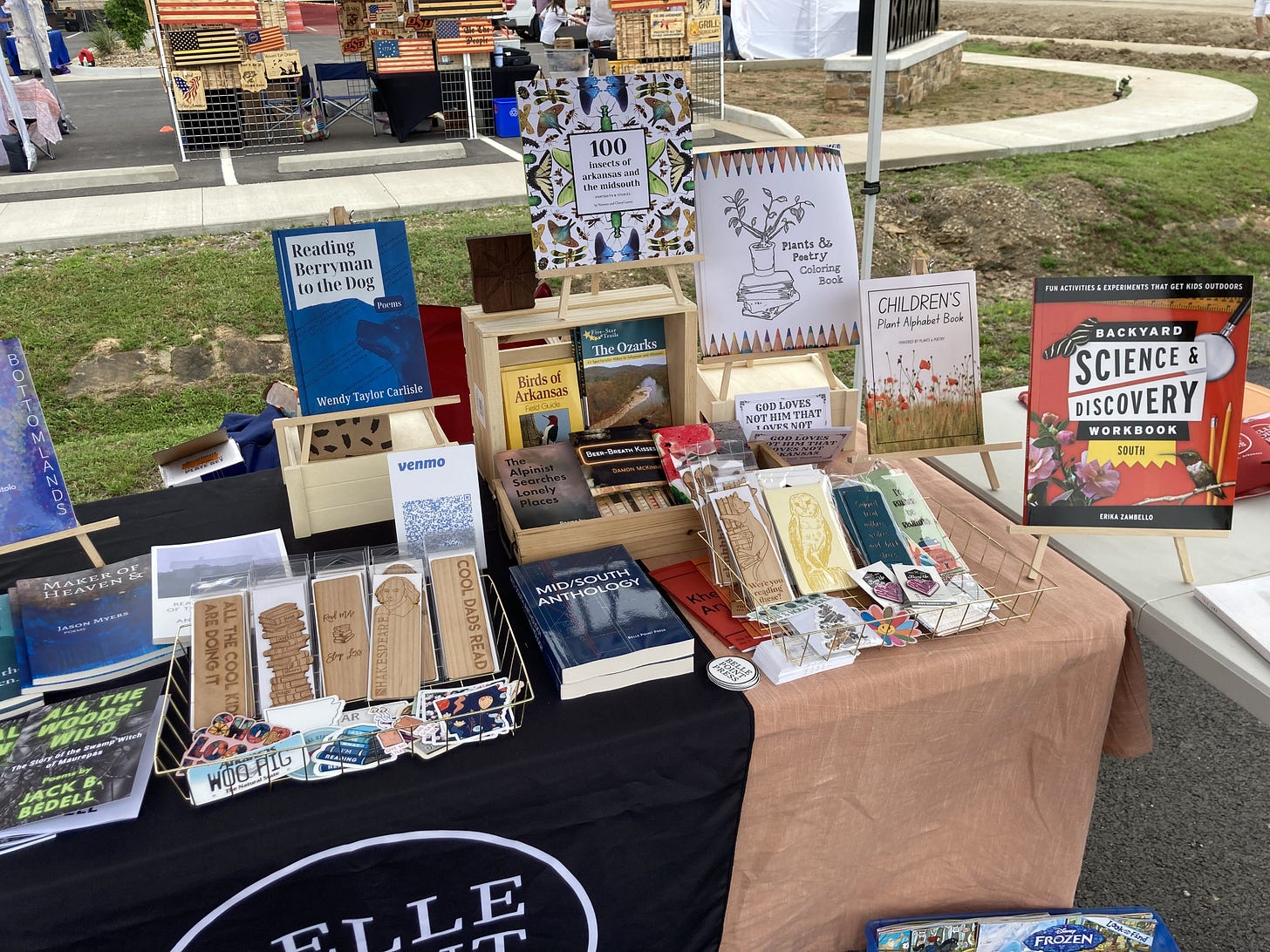
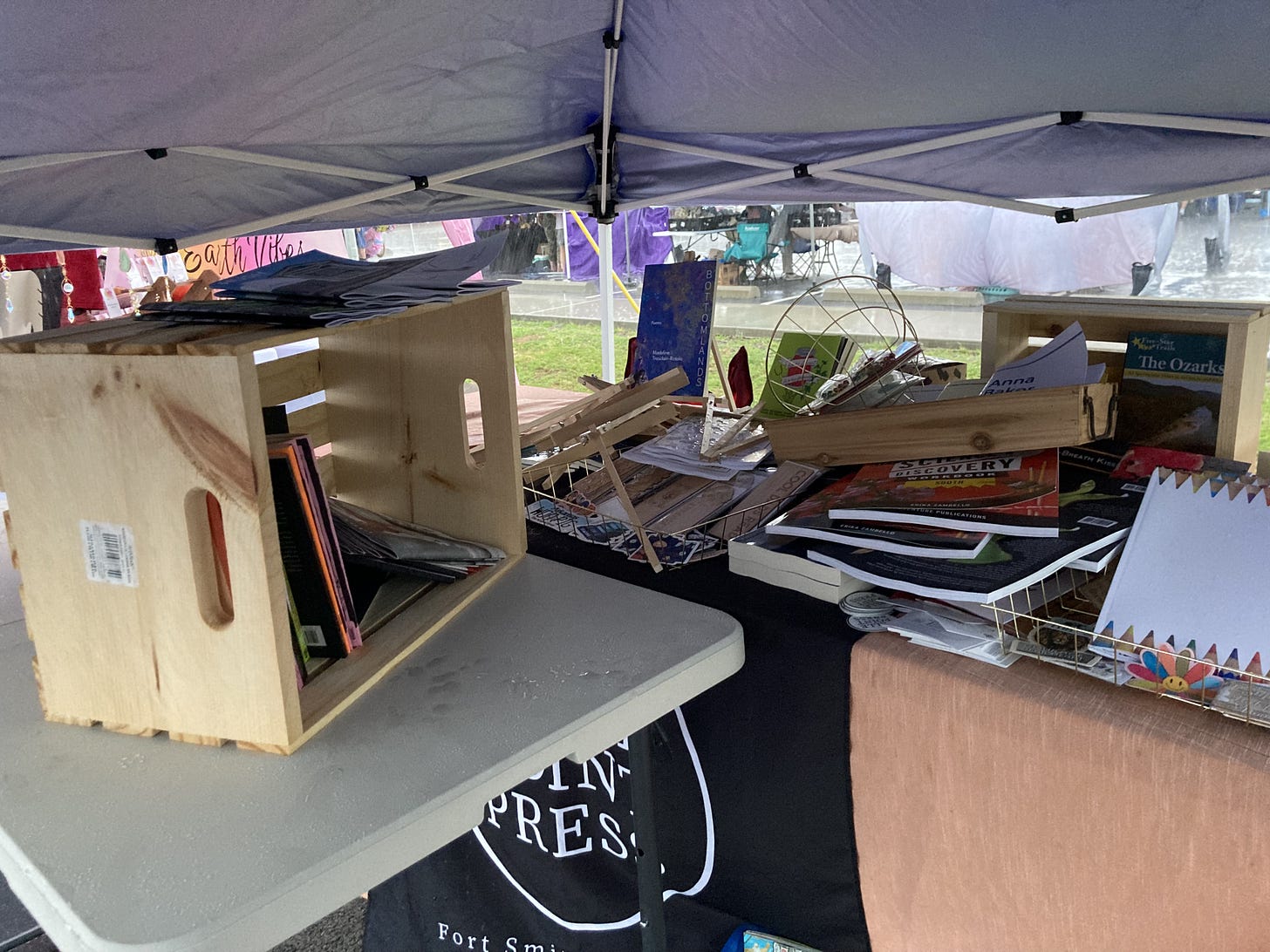
All these tips remind me of my years of setting up at farmers markets. (Though without having to lug around giant coolers full of glass jars and bottles--whew!)